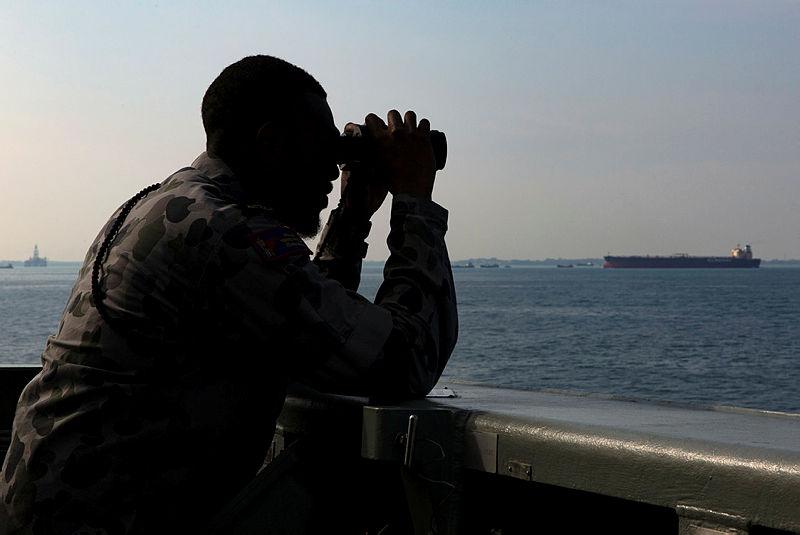Time for a standing force to keep the Malacca Strait clear of mines
Posted By Greg Mapson on June 2, 2020 @ 13:00
For the best part of 50 years, NATO has maintained a standing force of mine countermeasure vessels at the ready to respond to a mining incident in the English Channel and approaches.
The force originally consisted of seven to nine mine countermeasure vessels from the Royal Navy, German Navy, Royal Netherlands Navy and Belgian Naval Force, which were assigned to the squadron for either six or 12 months to counter the threat of Soviet mines being laid by air or by submarine during the Cold War.
The force still exists, augmented by the Danish and Norwegian navies and split into two groups. Standing NATO Mine Counter Measures Group 1 is responsible for northern Europe, and Group 2 for southern Europe.
My recent Strategist post discussed [1] the threat posed by the arsenal of mines held by China. During the Cold War, China obtained a range of Russian mine types that it has technically exploited, copied and improved to such an extent that it now possesses perhaps the largest arsenal of modern mines in the world.
Several laboratories in China are believed to be studying and developing a range of mine types. These include mobile mines, which are torpedo-like devices that can be fired from submarines and can self-navigate over substantial distances to their resting place, perhaps inside a harbour, and rocket-assisted rising mines, which blast upwards at a ship passing overhead. Another variant is a capsule, which rests in deep water waiting for a submarine to pass before releasing a torpedo to attack it.
China has been building such weapons in abundance. Other, less sophisticated mines can be launched from aircraft, surface ships, submarines, merchant ships and fishing vessels. They are effective and relatively cheap to manufacture.
In recent years, Chinese merchant ships and fishing vessels have been observed practising mine-laying, as have the large array of other dedicated Chinese navy mine-layers.
Shift focus now to the Malacca Strait, one of the world’s most important shipping lanes, through which some 94,000 ships pass each year. Their cargo includes a quarter of all global oil supplies.
Much has been said about the parlous state of Australia’s fuel reserves and the plan to stockpile oil in the United States. If the time comes to call on that emergency reserve, it will pass through the Malacca Strait. It is also a crucial route for much of Australia’s other imports and exports, including most of our coal, gas, bauxite and iron.
A mining incident in the Malacca Strait would be cataclysmic for many Asian nations and for Australia.
Mine-countermeasure assets, skills and practices among Southeast Asian navies bordering the Malacca Strait are poor, except for those of Singapore, which has continued to build its mine countermeasure capabilities and now, arguably, is well ahead of Australia.
In an attempt to raise standards in the region during the late 1990s, Australia was instrumental in having mine countermeasures included in Western Pacific exercises with allies.
But these skills were practised only every second year and were limited to very basic drills.
To counter the growing threat in the region, Australia needs to champion the establishment of a standing mine countermeasure force for the Malacca Strait. This initiative could be forged under the Five Power Defence Arrangements. Australia, the UK, New Zealand, Malaysia and Singapore all have the capacity to contribute to such a standing force, which should be ready to react at short notice to any mining incident in the strait or its approaches.
Rotating the Huon-class coastal mine hunters through such a force in Singapore would be the basis of Australia’s commitment. That would require the Royal Australian Navy to reverse its decision to remove the Huon class from service in the next four years.
In addition, the RAN has a significant number of unique minesweeping systems, now sitting idle, that can be towed easily by other ships or craft of opportunity, such as fishing vessels. A number of these minesweeping systems should be relocated to ports along the Malacca Strait, at least to Singapore and Lumut, and Malaysian and Singaporean personnel trained to use them.
New Zealand could assist with autonomous vehicle teams and Malaysia with a minehunter. Britain’s Royal Navy could also deploy a mine-hunting vessel or an autonomous vehicle team.
The standing force should commence operations under the Five Power Defence Arrangements, but vessels from other nations (such as Indonesia, Thailand, South Korea, Taiwan and Japan), along with the two US mine countermeasure vessels based in Sasebo, could also be invited to participate as required.
This initiative should be a high priority for the Australian government and the RAN.
Article printed from The Strategist: https://aspistrategist.ru
URL to article: /time-for-a-standing-force-to-keep-the-malacca-strait-clear-of-mines/
URLs in this post:
[1] discussed: /the-looming-threat-of-sea-mines/
Click here to print.
